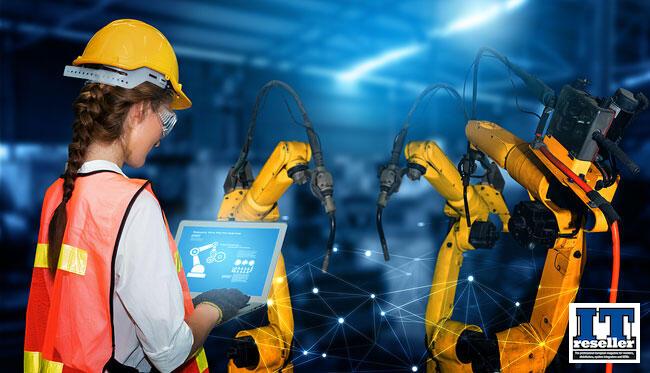By Miro Kostov, Product Manager at iBASEt.
It’s taken a few years to get to this point, but the Industrial Internet of Things (IIoT) has finally started to have the impact we had been promised. Adoption is skyrocketing, with the global IIoT market forecasted to reach $1.1bn by 2028, and the number of use cases continuing to grow as the ecosystem of IIoT devices expands.
As the number of devices increases, we are now seeing an explosion in IIoT data. It’s a similar phenomenon to the way our relationship with smartphones is evolving. Our devices grow more useful with every data point that is generated or shared, whether that’s reminding us of appointments, helping locate where we parked our car, or alerting us to stories that are of interest to us. In the same way that people are giving smartphones access to increasing amounts of data by sharing their calendars, locations and reading habits, every new IIoT device that is connected is providing extra insight that makes the wider ecosystem more intelligent.

As this momentum builds, it is becoming increasingly difficult for all manufacturers to hold off from adoption and expansion, as doing nothing could risk treading water while earlier adopters start to pull away. So how are manufacturers who have embraced the IIoT realising the benefits?
- Driving automation. Use of robots and smart equipment has exploded in recent years, and it’s estimated there will be 36.8 billion IIoT connections by 2025. For every connected device added, a manufacturer’s ability to intelligently automate will increase – before long they will have entire factories connected in a live network, sharing real-time data. Having an automated process that alerts workers to something they must review or respond to is one thing, but we’re now moving towards factories filled with machines that can communicate with each other, minimising the need for human intervention in many processes altogether.
- Streamlining key operations. The IIoT has also made practices like lean manufacturing, demand-driven production, and Just-in-Time inventory replenishment, far more attainable and feasible. For example, production line equipment can send triggers to automated carts to find and load smart pallets and then deliver them where needed, while replacement supplies can be automatically ordered from the inventory system. With the IIoT, this kind of complex chain of actions can be managed without any human involvement, unless needed.
- Reducing production downtime. Breakdowns, parts shortages and accidents can seriously disrupt production; research shows factories can lose between five and twenty per cent of their productivity to downtime. The IIoT can help overcome this, with machines sending immediate alerts to maintenance teams, who can take action without everything grinding to a halt. The IIoT can also take predictive maintenance to an even higher level. Sensors can collect data from machines using vibrational or infrared methods, warning of potential machine failures before they even happen.
- Enhancing the customer experience. It’s not just confined to the four walls of a physical factory floor – the IIoT can even allow manufacturers to stay connected to customers after the finished product is in their hands. Using a digitalised MRO (Maintenance, Repair & Overhaul) system, manufacturers can view details such as operations status and repair history, which can then be fed back into a MES (Manufacturing Execution System) for continuous improvement. This will play an increasingly key role in customer experience for manufacturers, with the data tracking performance of products in real-life action, making it easier to help consumers use and repair their products.
- Completing the Digital Thread. Overall, IIoT infrastructure enables manufacturers to maintain a complete digital thread across every stage of the product lifecycle. This makes it possible to correct and optimise design and quality over time, leading to the best product at the fastest rate possible. This can be particularly useful for frequent Engineering Change Orders (ECOs) during production, maintaining uptime and optimising production processes with timely updated, step-by-step instructions for technicians.
The only way is up
As the volume of data continues to grow, the IIoT will become increasingly important for manufacturers. It is no longer a distant fantasy. It’s here today, already making an impact, and providing a huge unavoidable reason why digital transformation needs to be embraced by the manufacturing industry. In the grand scheme of things, the IIoT is still taking its baby steps, but with more data and more IIoT devices, we’ll undoubtedly see it push manufacturers to even greater levels in the years ahead.

Add a Comment
No messages on this article yet